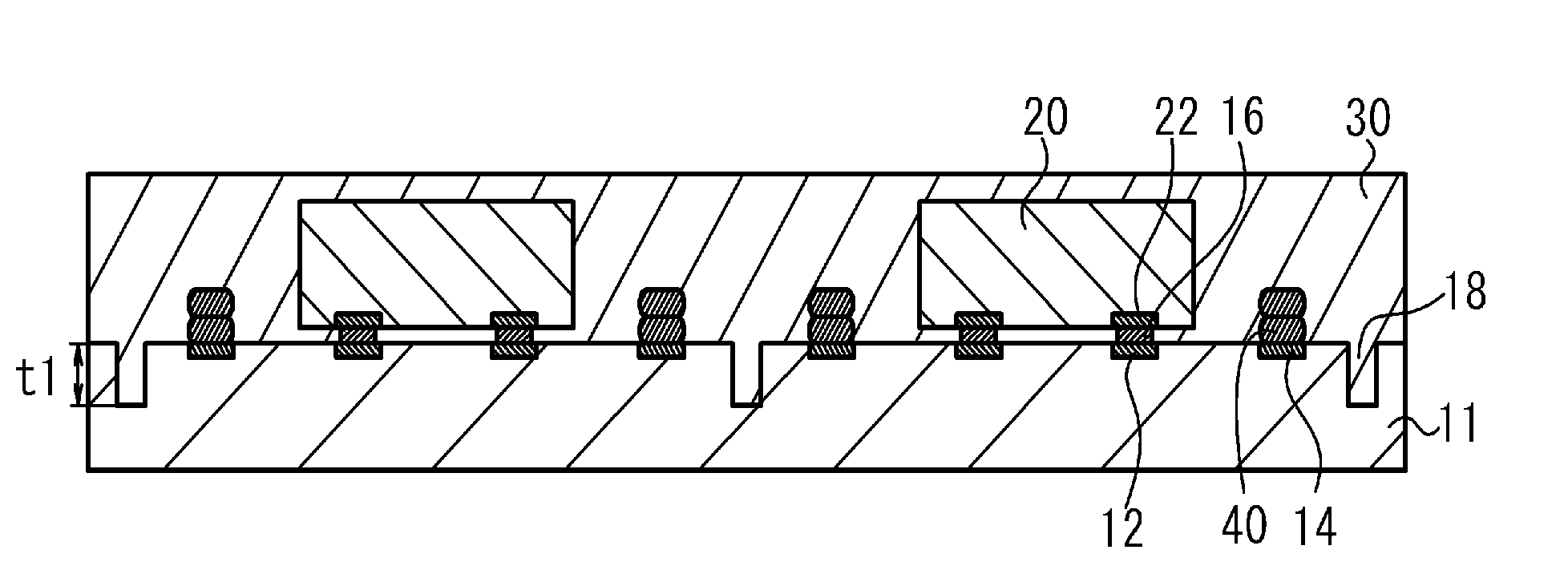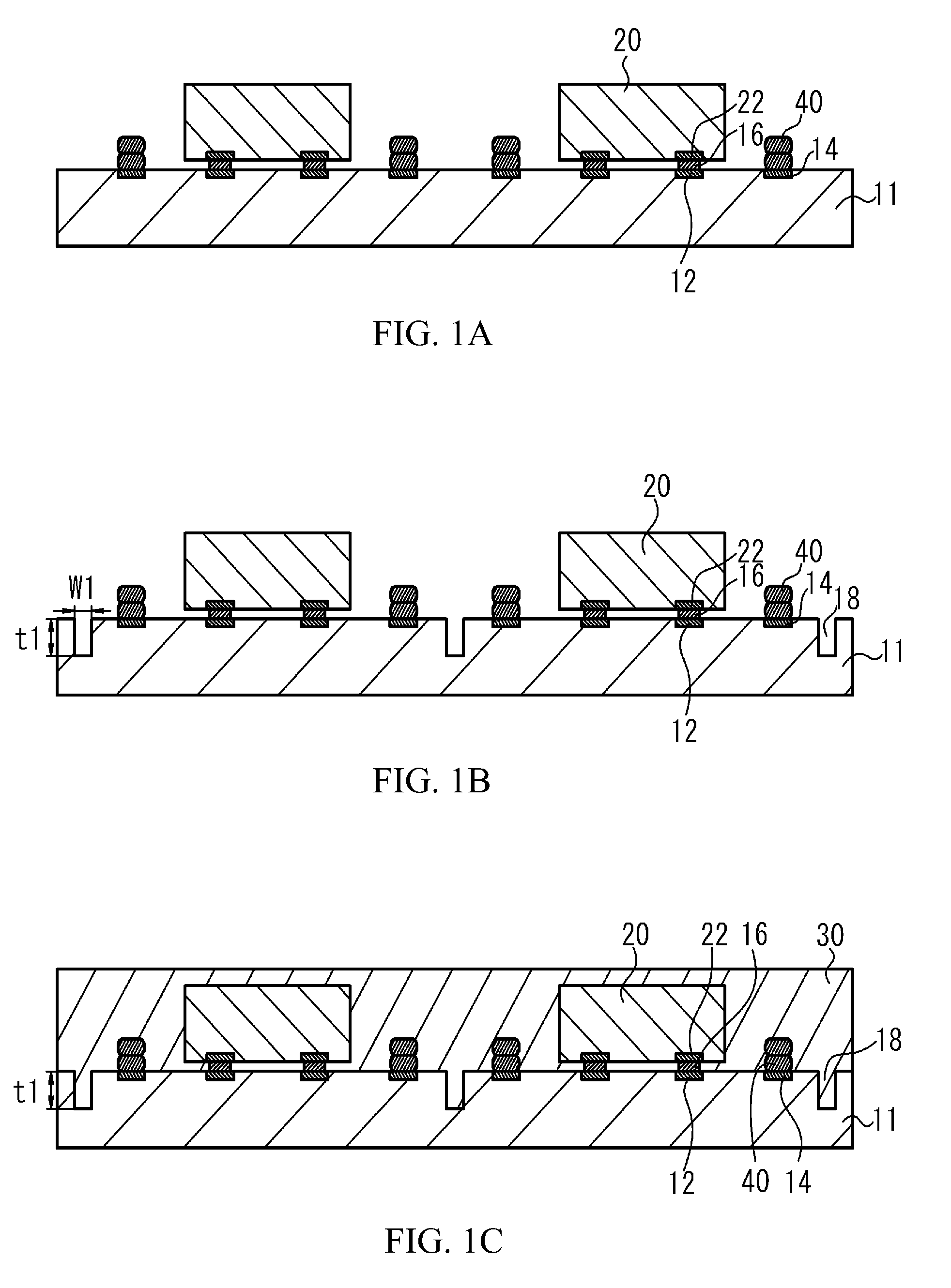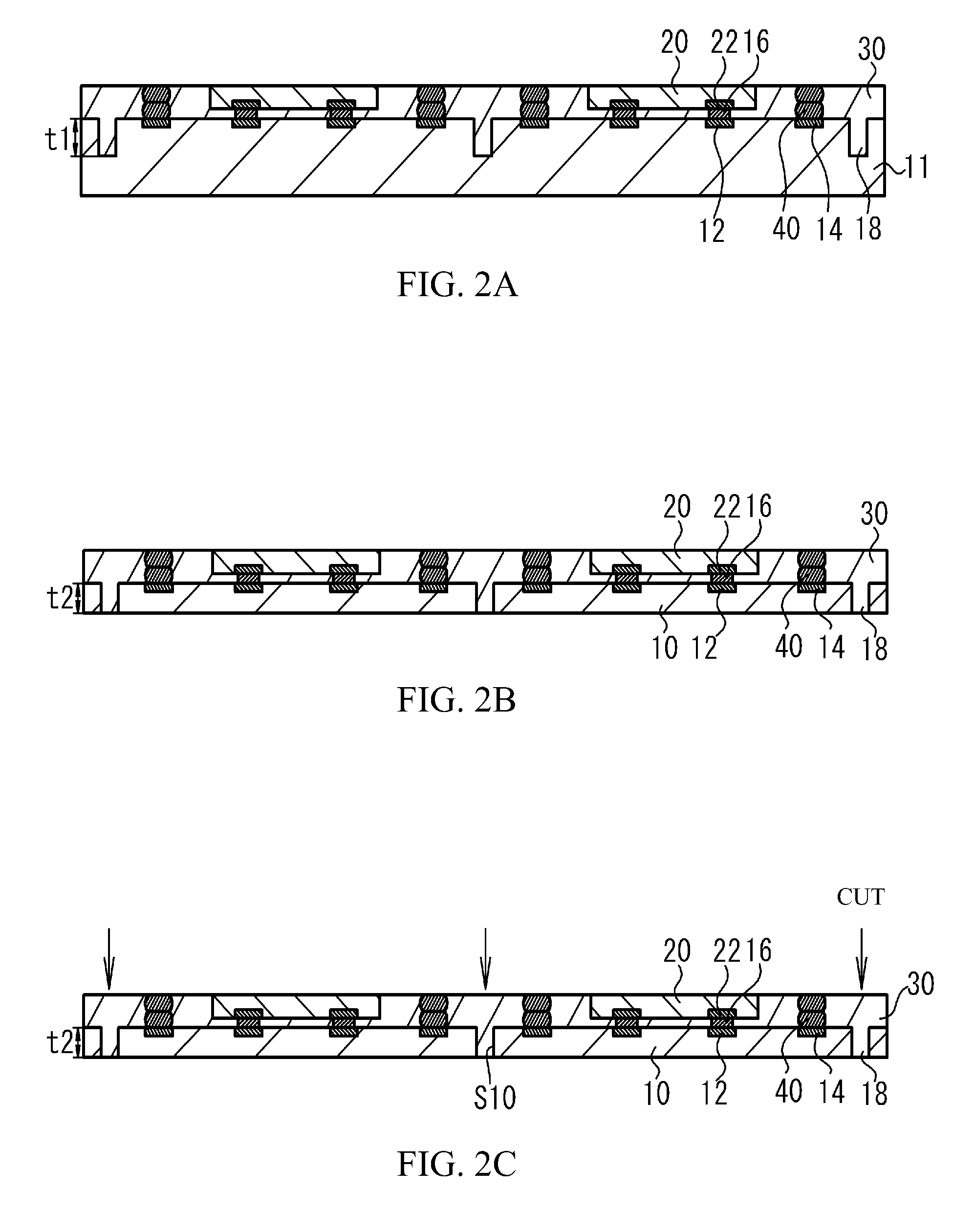Semiconductor device and method for manufacturing thereof
a semiconductor chip and semiconductor technology, applied in semiconductor devices, semiconductor/solid-state device details, electrical apparatus, etc., can solve the problems of difficult to reduce the thickness of the second semiconductor chip used in the coc, difficult to satisfy the requirement to reduce the thickness of the second semiconductor chip to less than 100 m, etc., to reduce suppress the damage applied, and reduce the effect of the thickness of the semiconductor devi
- Summary
- Abstract
- Description
- Claims
- Application Information
AI Technical Summary
Benefits of technology
Problems solved by technology
Method used
Image
Examples
first embodiment
[0027]The method for manufacturing a semiconductor device according to a first embodiment will be described referring to FIGS. 1A to 2C. Referring to FIG. 1A, a post electrode 40 formed of, for example, an Au stud bump is formed on a pad 14 on the upper surface of a silicon semiconductor wafer 11 having a circuit formed on its upper surface. A bump 16 formed of Au, Cu (copper) or solder is formed below a pad 22 on the lower surface of a second semiconductor chip 20 formed of silicon and having a circuit on its lower surface. An interconnection (not shown) allows the electric coupling between the post electrodes 40, between pads 14, and between the post electrode 40 and the pad 14. The second semiconductor chip 20 is flip-chip bonded onto the semiconductor wafer 11 with the bump 16. The thickness of the thus bonded semiconductor wafer 11 and the second semiconductor chip 20 is approximately 750 μm.
[0028]Referring to FIG. 1B, a groove 18 with its width w1 set to 60 μm and its depth t1...
second embodiment
[0039]A second embodiment is an example for packaging the semiconductor device 100 on the interposer. Referring to FIG. 4, the semiconductor device 100 according to the first embodiment is mounted on an insulated interposer 50 (mount portion) formed of the glass epoxy and the like through a die adhesive material 64 such as an adhesive agent. The upper surface of the post electrode 40 is connected to an electrode 54 of the interposer 50 via a bonding wire 62. The semiconductor device 100 is sealed with a sealing portion 60 formed of a resin material. A solder ball 58 is formed on the lower surface of the interposer 50 via an electrode 52. The electrodes 52 and 54 are connected by a connection portion (not shown) provided on the interposer 50. The solder resist 56 is applied onto the lower surface of the interposer 50 so as not to be in contact with the solder ball 58. The semiconductor device 100 has the same structure as that of the first embodiment shown in FIG. 3, and the explanat...
third embodiment
[0042]A third embodiment is an example for forming the post electrode through plating. Referring to FIGS. 5A to 5C, the method for manufacturing the semiconductor device according to the third embodiment will be described. Referring to FIG. 5A, a Cu layer 42 formed of Cu is formed on a pad 14 on the semiconductor wafer 11 through electrolytic plating. The other structure of the embodiment is the same as that of the first embodiment shown in FIG. 1A, and the explanation thereof, thus will be omitted.
[0043]Referring to FIG. 5B, the same manufacturing steps as those of the first embodiment shown in FIGS. 1B and 1C are performed. The resin portion 30 and the second semiconductor chip 20 are ground until the upper surface of the Cu layer 42 is exposed. Referring to FIG. 5C, a Ni layer 44 formed of Ni (nickel) is formed on the Cu layer 42 through nonelectrolytic plating, thus forming a post electrode 46 formed of the Cu layer 42 and the Ni layer 44. The manufacturing steps of the first em...
PUM
 Login to View More
Login to View More Abstract
Description
Claims
Application Information
 Login to View More
Login to View More - R&D
- Intellectual Property
- Life Sciences
- Materials
- Tech Scout
- Unparalleled Data Quality
- Higher Quality Content
- 60% Fewer Hallucinations
Browse by: Latest US Patents, China's latest patents, Technical Efficacy Thesaurus, Application Domain, Technology Topic, Popular Technical Reports.
© 2025 PatSnap. All rights reserved.Legal|Privacy policy|Modern Slavery Act Transparency Statement|Sitemap|About US| Contact US: help@patsnap.com



